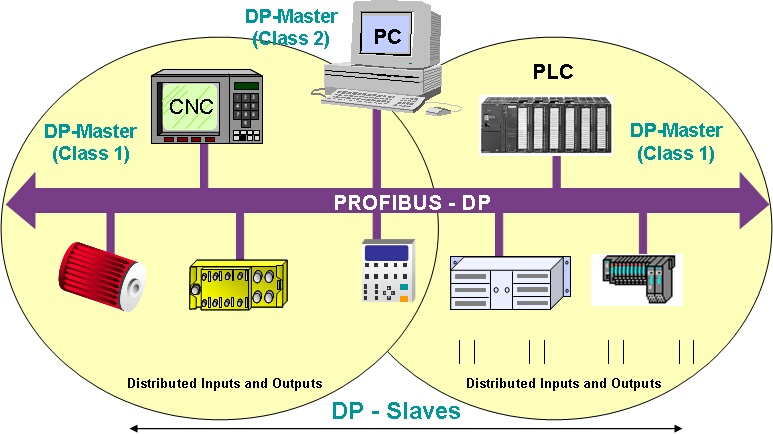
PROFIBUS Manual
PROFIBUS differentiates between the following station or device types:
Masters determine data traffic on the bus. A master can send messages without an external request if it is in possession of the bus access token. Masters are also described as active stations.
Slave are peripheral devices, such as input and output devices, valves, drives and transmitters. They do not receive a token authorizing bus access. This means that they can only acknowledge messages received or, at the request of a master, send messages to it. Slaves are described as passive stations. They only require a small portion of the bus protocol, which means they make implementation possible with little effort.
Masters and slaves can be used for different protocols, such as
•FMS (field-bus message specification)
•DP (decentralized peripheral)
For this reason, the relevant protocol is often prefixed to their name:
An FMS master controls a relationship with an FMS slave. This is not further explained in the present volume.
The DP master controls a DP system. The DP slave is part of a DP system.
The DP master can assume different functions in a DP system. These functions are known as classes:
These masters are controllers of a DP systems and the DP slaves assigned to it. Typically they will be controllers, PLCs or PC based systems.
These masters are tools for commissioning, engineering and maintenance. They allow programs to be loaded into controllers and DP slaves to be diagnosed and their parameters set. Typically they will be PC based systems.
Is a clock master and distributes time.

Structure of a DP system
Every station - master or slave - in a DP system has a unique address.
